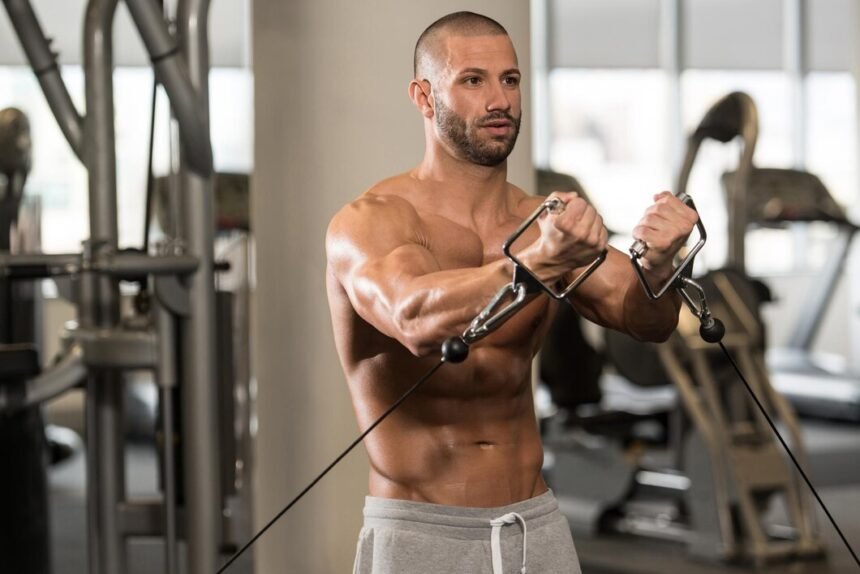Standing Low Cable Fly: Exercise Overview
The standing low to high cable fly is a dynamic isolation exercise designed to target the pectoralis major, particularly the upper chest, with secondary engagement of the triceps and anterior deltoids. By using cables set at a low position, this movement follows an upward arcing path, emphasizing the upper pecs while requiring significant core stability for balance.
Best utilized as an accessory exercise to enhance chest hypertrophy, the standing low to high cable fly is ideal for bodybuilding-style training due to its focus on muscle contraction and constant tension. It’s a versatile addition to chest-focused workouts, push routines, upper-body sessions, or full-body programs, suitable for lifters aiming to sculpt a defined chest (Schoenfeld, 2010).
How to Perform the Standing Low to High Cable Fly
- Set both cable pulleys to their lowest position and select an appropriate weight.
- Stand in a split stance, grasping each handle with a slightly supinated grip (palms angled upward), and step forward to create tension in the cables—this is your starting position.
- With a slight bend in your elbows, press the handles upward and inward in an arcing motion, flexing your chest until the handles meet at chest height.
- Pause briefly at the top, squeezing your pecs for maximum contraction.
- Slowly lower the handles back to the starting position, maintaining the elbow angle and keeping the movement controlled.
- Repeat for the desired number of repetitions.
Tips for Optimal Performance
- Focus on Chest Activation: Visualize hugging a tree to engage the pecs fully, avoiding excessive grip pressure to prevent forearm and bicep overuse (Schoenfeld, 2016).
- Maintain Elbow Angle: Keep a consistent slight bend in your elbows throughout the movement to protect the shoulder joints and target the chest effectively (Escamilla et al., 2009).
- Control the Movement: Perform the fly and return slowly to maximize time under tension and avoid momentum, ensuring effective muscle engagement.
- Stabilize Your Core: Brace your abs to prevent excessive lower-back arching, maintaining a stable torso and reducing strain (McGill, 2010).
- Breathe Properly: Exhale as you bring the handles together and inhale as you lower them to support core stability and muscle oxygenation (Wirth et al., 2016).
- Avoid Overloading: Choose a weight that allows controlled form for your target rep range (e.g., 10–15 reps for hypertrophy) to maintain stability and avoid compromising technique.
Targeting your upper chest with low cable flys? Learn how they enhance pecs in our Ultimate Guide to Muscle Groups.








